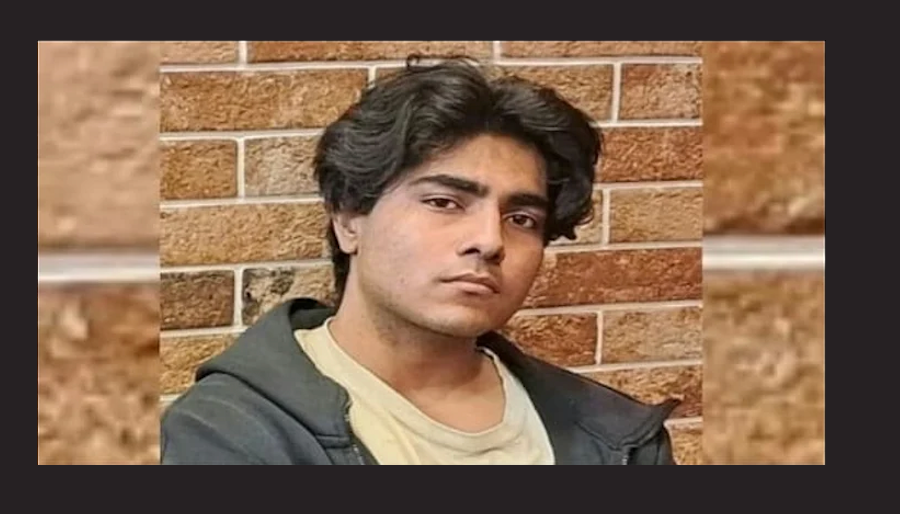It would be rather unfair to call Diego merely a Charlie Chaplin impersonator. He actually lives and breathes the persona of Chaplin flawlessly; it is easy to shed all vestiges of disbelief and be convinced completely that this is none other than Charlie Chaplin himself.
PRAVASISAMWAD.COM
Verbal communication has its limitations. Voice is the carrier, and language is the tool to get the message across. But silence has an enchanting eloquence, somewhat surreal though, that is without equal – simple, direct, and without any fuss or frills. When Diego Andres Spano speaks to his audience, he does it without uttering a single word with consummate artistry. And the audience listens to his ‘voiceless words’ with rapt attention – and in hushed silence. His silence speaks volumes as it transcends all barriers of cultures, nationalities and languages.
Born and raised in Buenos Aires, Argentina, and trained for five years at drama school, Diego, has made it his life’s mission to keep alive the charm and magic of Charlie Chaplin alive for as long as he possibly can.

You wonder what made him choose Charlie Chaplin as his idol and style icon. As he relates the story of his early childhood, you begin to realise that he has weathered many storms and really got to see the raw side of life. Chaplin’s childhood years were rough and ragged too. The legacy of their working-class background has been a powerful motivator to use their comic wit and humour as armour against the slings and arrows of the world.
However, it would be rather unfair to call Diego merely a Charlie Chaplin impersonator. He actually lives and breathes the persona of Chaplin flawlessly; it is easy to shed all vestiges of disbelief and be convinced completely that this is none other than Charlie Chaplin himself.
He says it in his own characteristic way, which has a tongue-in-cheek element to it. “Sometimes when I wake up in the morning and look in the mirror in a half sleepy state, I’m a bit taken aback I say to myself: What’s Charlie Chaplin doing in my house? It’s only then that I realise that that’s not Charlie; it’s only me standing on the other side of the mirror”. It’s hard to say whether he’s serious, or he’s just pulling your leg. I suppose we’ll just have to give him the benefit of doubt.
But honest to goodness, he really does catch you off guard and makes you wonder, with eyes half popping out of their sockets, whether you’re seeing a ghost.
Here’s what happened to me a couple of years ago in Muscat. I was casually meandering around, window-shopping inside the Grand Mall, Muscat City Centre. And then suddenly out of the blues lightning struck.
Barely 20 yards ahead in the mall corridor, I see this apparition, a spitting image of the one and only Charlie Chaplin – dressed like a tramp: baggy pants, over-sized shoes, under-sized, scruffy coat, bowler hat, and that unmistakable shuffling gait. I freeze in my tracks and mumble incoherently: ‘What’s Charlie doing here inside the Grand Mall? Oh, no, this can’t be him; it’s too early in the evening to see a ghost”.
By this time, he had come right up to where I was. He smiled a typical Chaplin smile and pointed in the direction of his manager, who promptly tells me that this is Diego, the world’s greatest Charlie Chaplin impersonator. The Muscat City Centre had invited him to put up some of his street-style skits inside the mall and take everyone by surprise.
Indeed he has received global acclaim and accolades as the world’s best impersonator of Charlie Chaplin. What makes his portrayal of Chaplin’s Tramp even more convincing and extraordinary is that he does it all without speaking a word. Combining his acting and mime skills, Diego conveys the entire gamut of emotions and feelings so that he touches the hearts of people with his comical antics and mimicry.
The multi-talented actor, impressionist, clown, mime and musician from Buenos Aires, Argentina, in Muscat on an entertained adults and children alike with his absolutely amazing impersonation of Charlie Chaplin, the world-famous actor and comedian from the era of silent film, in his character as ‘The Tramp’, and had everyone in splits of laughter.

He first started performing as Charlie Chaplin 10 years ago, and has since risen to become one of the world’s best Charlie Chaplin impersonators, having been invited to perform in world-class theatre festivals in Canada (Montreal), Spain (Barcelona, Madrid), Italy (Rome, Catolica, Bra), France (Avignon, Aurillac), Uruguay (Montevideo), and England, most recently performing to sell-out shows at the Edinburgh Fringe Festival and the Festival on the Isle of Wight. He has a regular show at London’s famous Covent Garden.
His manager says: “It is easy to communicate with people, because the language of mime requires no speech and everyone can understand what I’m saying or trying to convey; that is to laugh and be joyful”.
Indeed Diego has received global acclaim and accolades as the world’s best impersonator of Charlie Chaplin. What makes his portrayal of Chaplin’s Tramp even more convincing and extraordinary is that he does it all without speaking a word
He adds: “I like to perform in this way so I can have this very upfront kind of interaction with the public and one reason for this is that basically, I’m a street theatre artist”.
Diego went to drama school for five years, where he trained as a professional actor and clown, and has worked for charities and schools, hospitals, social theatre work in deprived urban areas, and as a member of Clowns without Borders in Argentina, Spain and Morocco. Diego is also an accomplished singer, songwriter, and guitar and ukulele player.
He has trained as a professional actor and clown, and has worked for charities and schools, hospitals, social theatre work in deprived urban areas, and as a member of Clowns without Borders in Argentina, Spain and Morocco.
He first started performing as Charlie Chaplin twelve years ago, and has since risen to become one of the world’s best Charlie Chaplin impersonators, having been invited to perform in world-class theatre festivals in Canada (Montreal), Spain (Barcelona, Madrid), Italy (Rome, Catolica, Bra), France (Avignon, Aurillac), Uruguay (Montevideo), and England, most recently performing sell-out shows at the Edinburgh Fringe Festival in August and the Festival on the Isle of Wight. He has a regular show at London’s famous Covent Garden.
Diego’s acclaimed portrayal of Charlie Chaplin has charmed audiences all over the world, including Argentina, the United Kingdom, Ireland, Spain, Morocco, Canada, and Patagonia. He is now based in Europe, but travels the globe.
Diego directed his first production at age 13. He also honed his skills working alongside his grandmother, a professional clown, and other family members, including musicians, playwrights, and theatre actors. Diego is also an accomplished singer, songwriter, and guitar and ukulele player.
In 1999, he added an impersonation of Charlie Chaplin’s famous character, The Little Tramp, to his act, having grown up watching the films and admiring Chaplin’s talent. When he first applied the face paint and makeup, he was shocked to see the physical resemblance!
He soon discovered that The Little Tramp awoke strong emotions of both in him and the audience. With laughter as the goal, he developed original sketches to convey the struggle of sadness versus happiness, bad versus good and rich versus poor and to involve good-natured members of the audience.
As a professional actor and clown who is passionate about giving back to the community, Diego has worked with Clowns without Borders, an NGO. He took his street entertainment act to 10 schools for indigenous children (Comunidad Mapuches), and to numerous charity events, hospitals, and social theatres in deprived urban areas of Argentina, Spain, and Morocco. Diego’s Charlie also raised money for Thailand’s tsunami victims at events in London.
Diego’s physical resemblance to ‘The Little Tramp’ is extraordinary. This world champion of mime portrays the innocence and humour of Chaplin to such a high standard that he leaves his audiences mesmerised by the simplicity of humour and innocence. His performances bring to life the memory of Chaplin back to life.
During the silent film era, The Tramp, The Little Fellow, or Charlot, as he is known in many non-English speaking countries, became one of the most recognised screen characters and brought laughter to millions of people.
Chaplin’s childhood was plagued by poverty, mitigated only by the love for and from his mother. His early life included spells in a workhouse and a strained relationship with his alcoholic father. His later films would portray this working-class life and struggles using humour and social realism.
Charlie was a working actor from the age of 9 and while still a teenager, Chaplin toured the vaudeville circuit in the US with the likes of Stan Laurel. In late 1913, Charlie didn’t return home. Instead, he took up an offer from Keystone Films Studio, a decision that would change the course of film history.
The Tramp first came to life when Chaplin was working on another comic’s picture, Mabel’s Strange Predicament. As an afterthought, the director wanted a comic character with funny make-up, so Charlie grabbed a mishmash of vagabond-like clothing and a small moustache that would not hide his facial expressions. When he appeared on set, everyone loved it and Chaplin would say later that “the clothes and the make-up made me feel the person he was. I began to know him, and by the time I walked on to the stage, he was fully born.”
Chaplin’s first 8 films – all shot within two months in 1914 – included Kid Auto Races At Venice (February 7, 1914), which featured the Tramp for the first time because it was released two days before Mabel’s Strange Predicament. The movie catapulted Chaplin into stardom and he would continue to play this character in most of his later films.
He first started performing as Charlie Chaplin 10 years ago and has since risen to become one of the world’s best Charlie Chaplin impersonators, having been invited to perform in world-class theatre festivals in Canada (Montreal), Spain (Barcelona, Madrid), Italy (Rome, Catolica, Bra), France (Avignon, Aurillac), Uruguay (Montevideo), and England, most recently performing sell-out shows at the Edinburgh Fringe Festival in August and the Festival on the Isle of Wight. He has a regular show at London’s famous Covent Garden.











